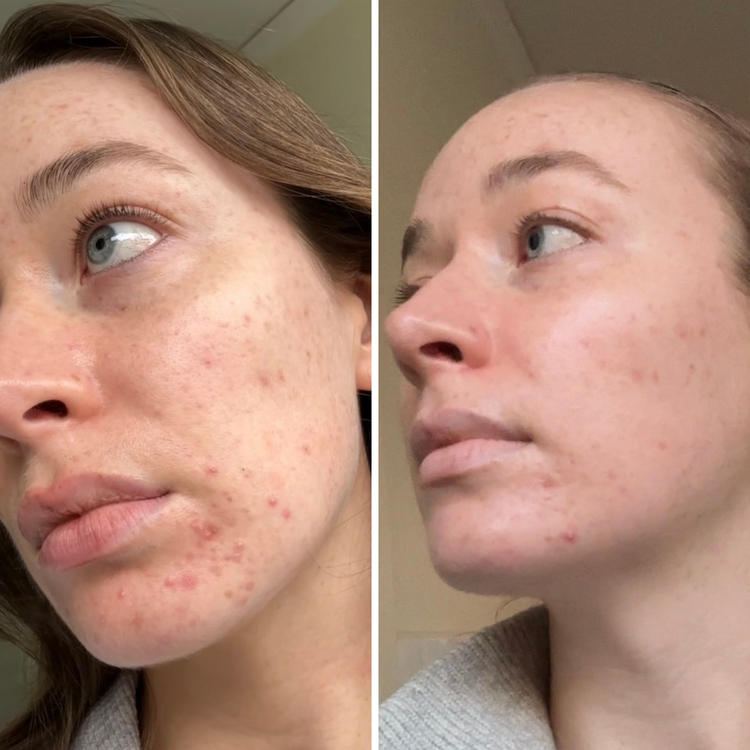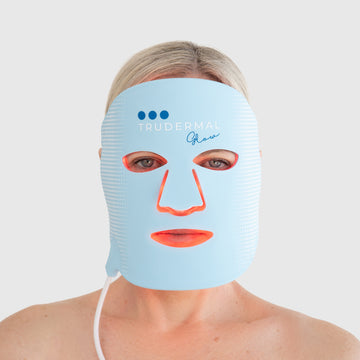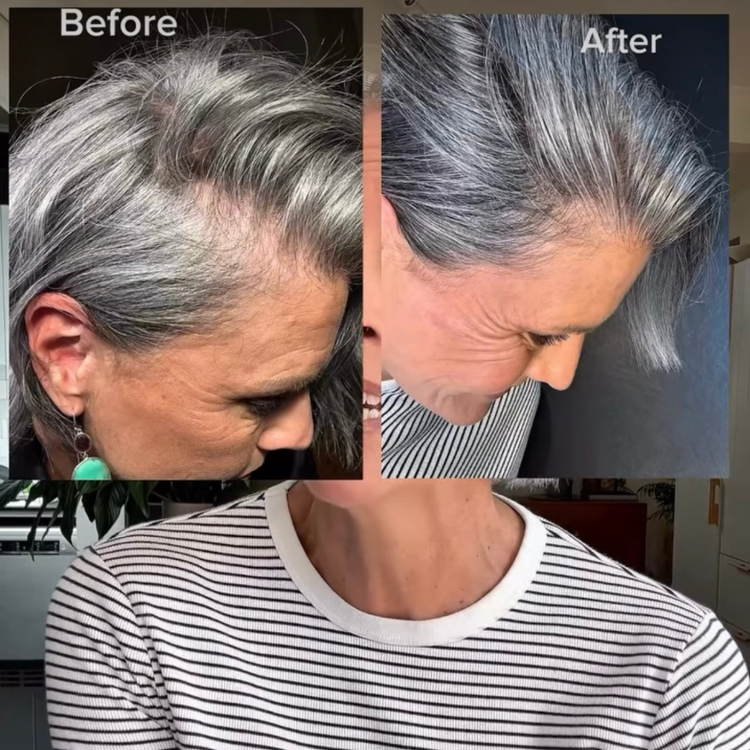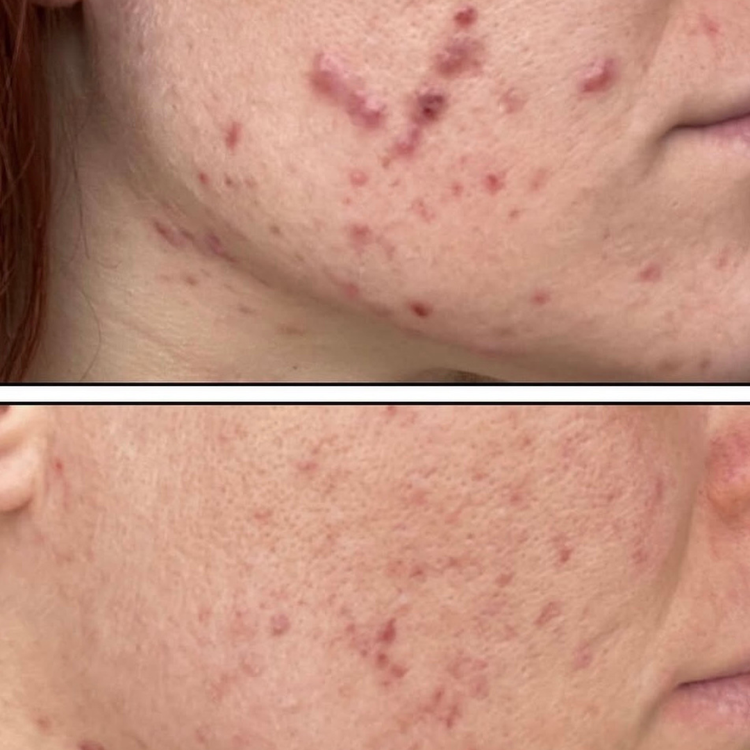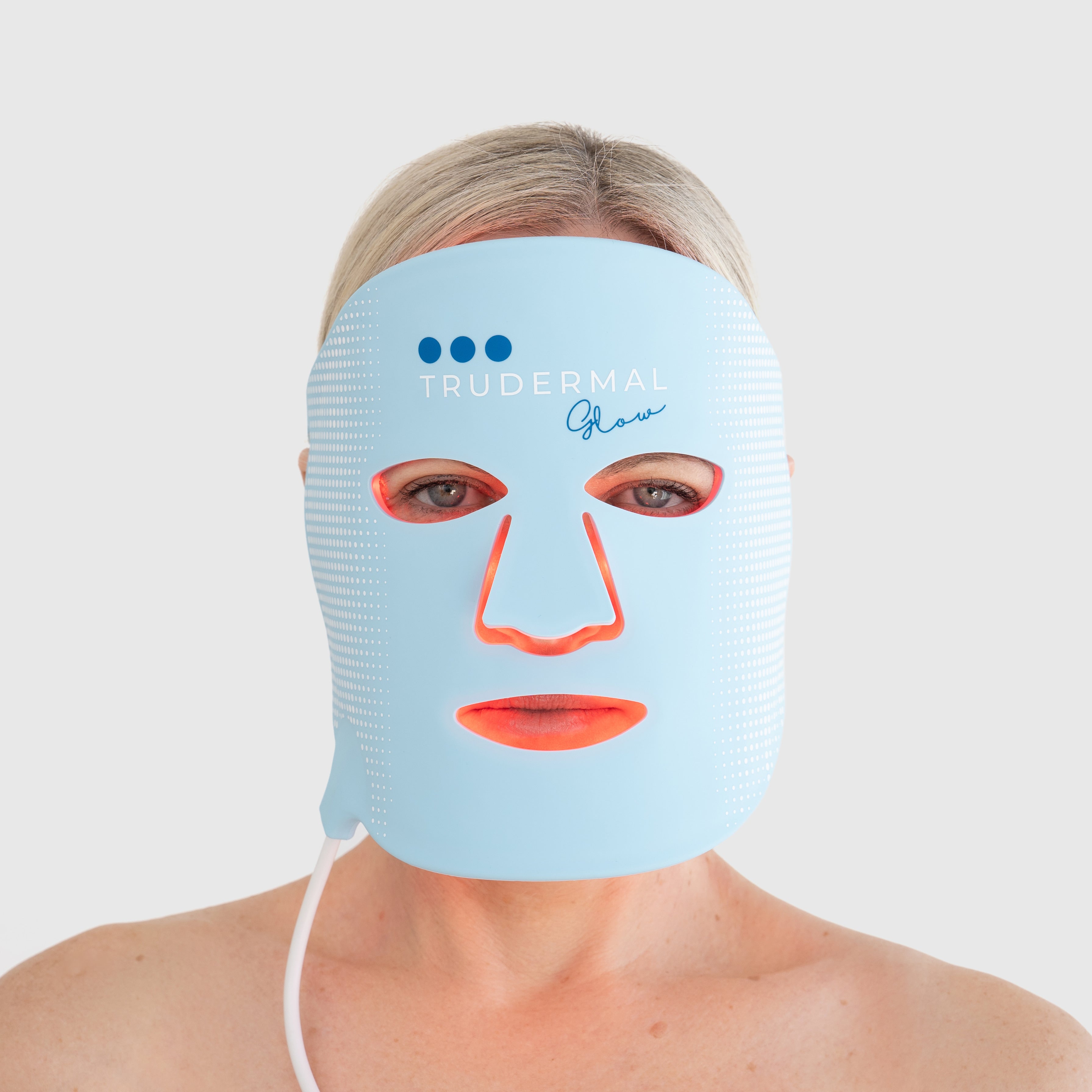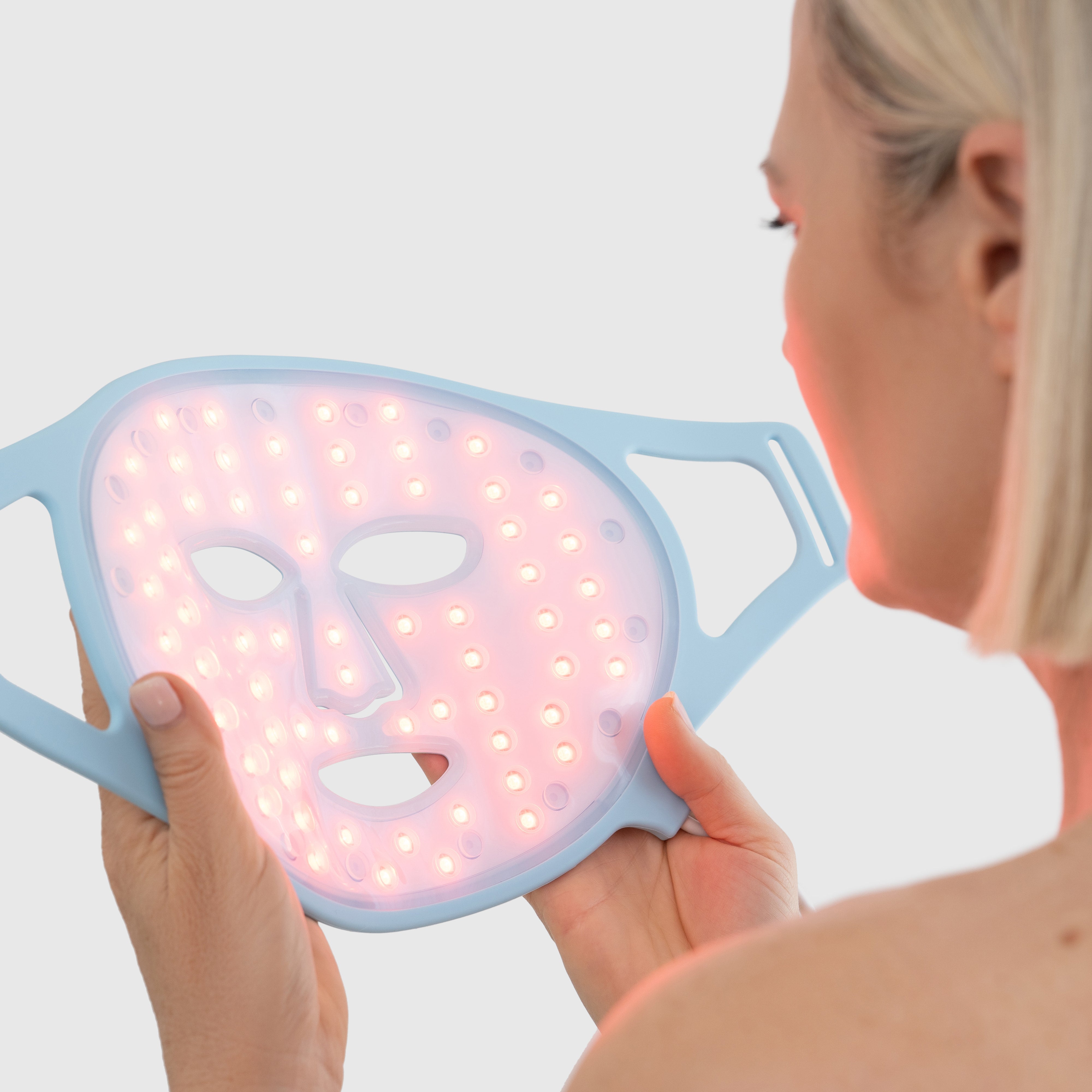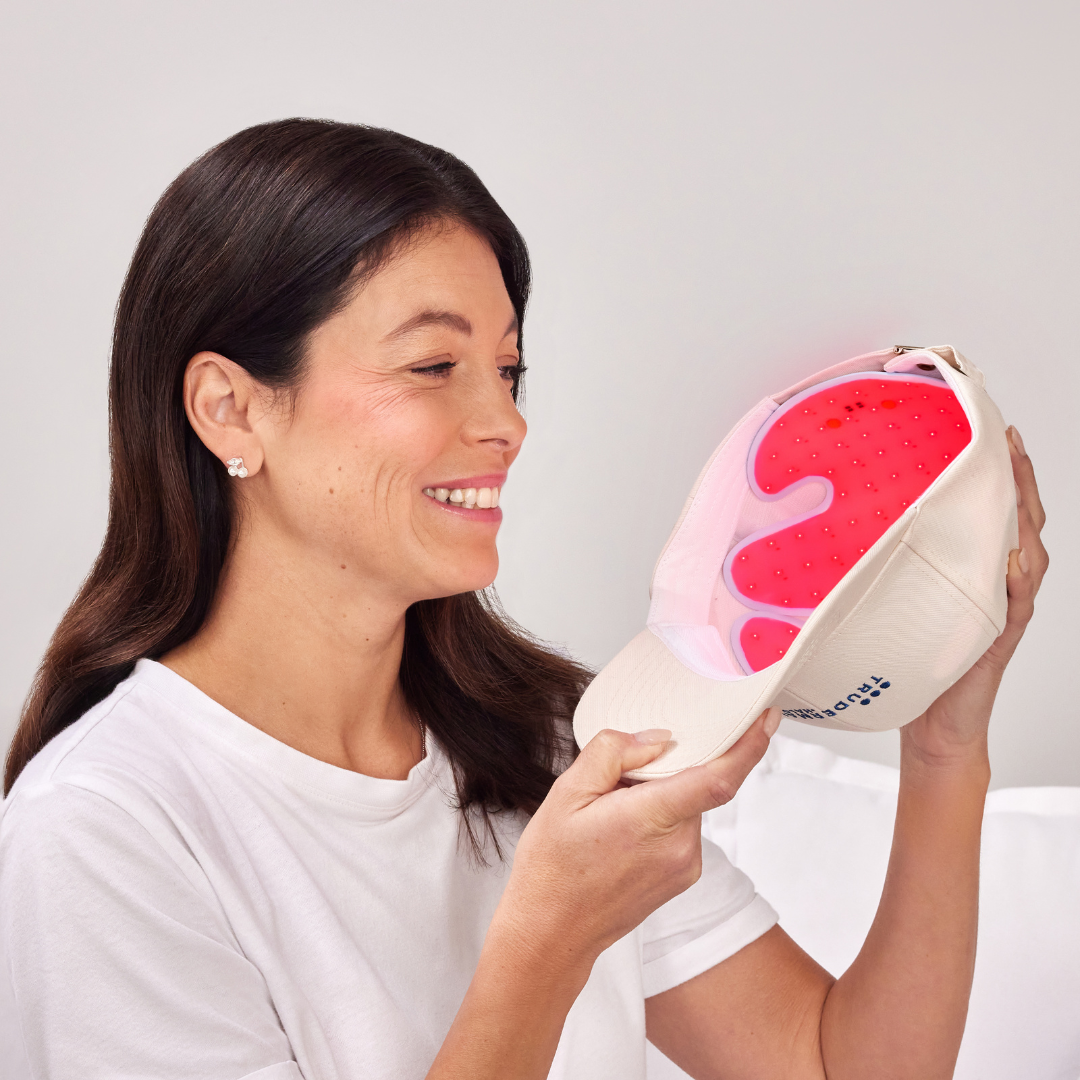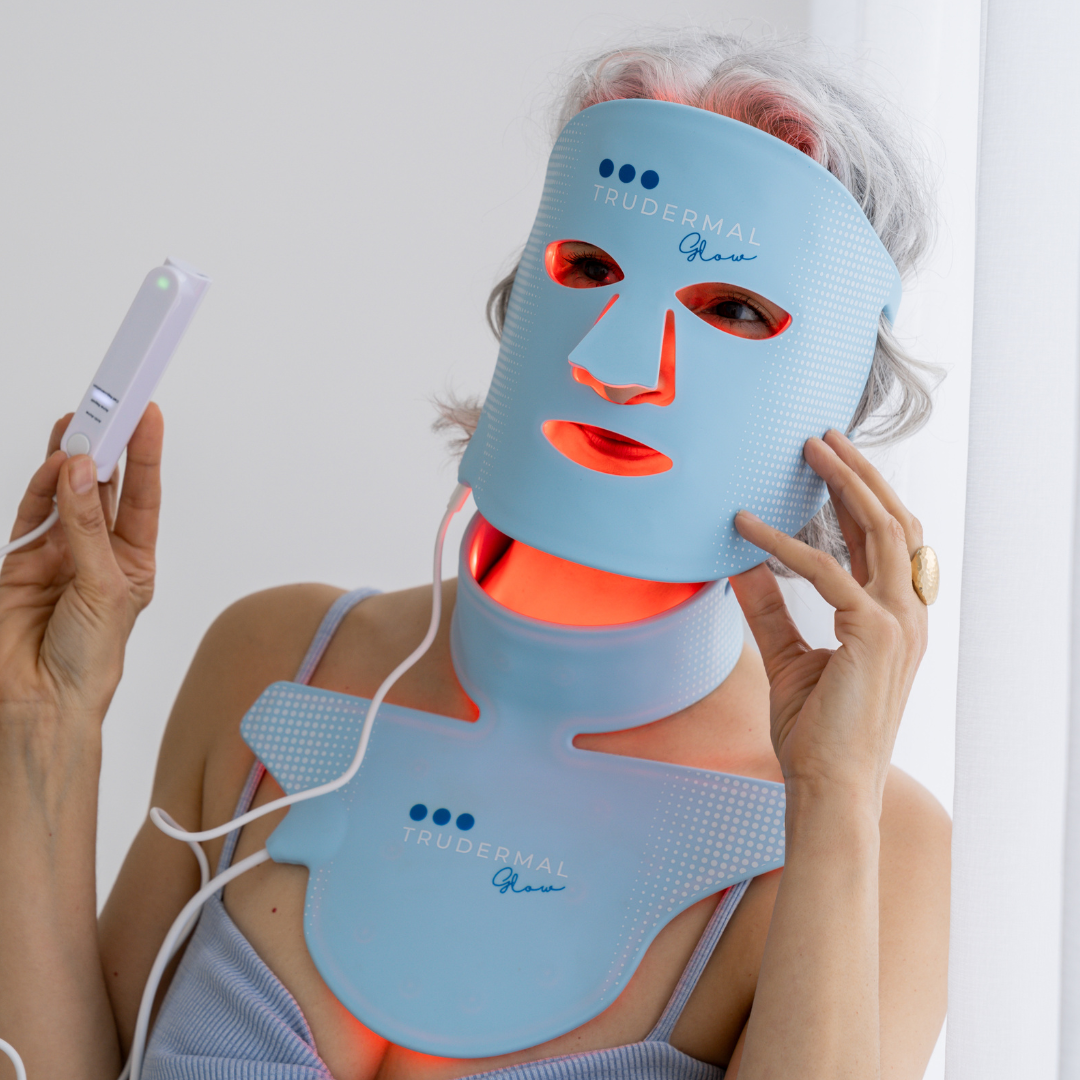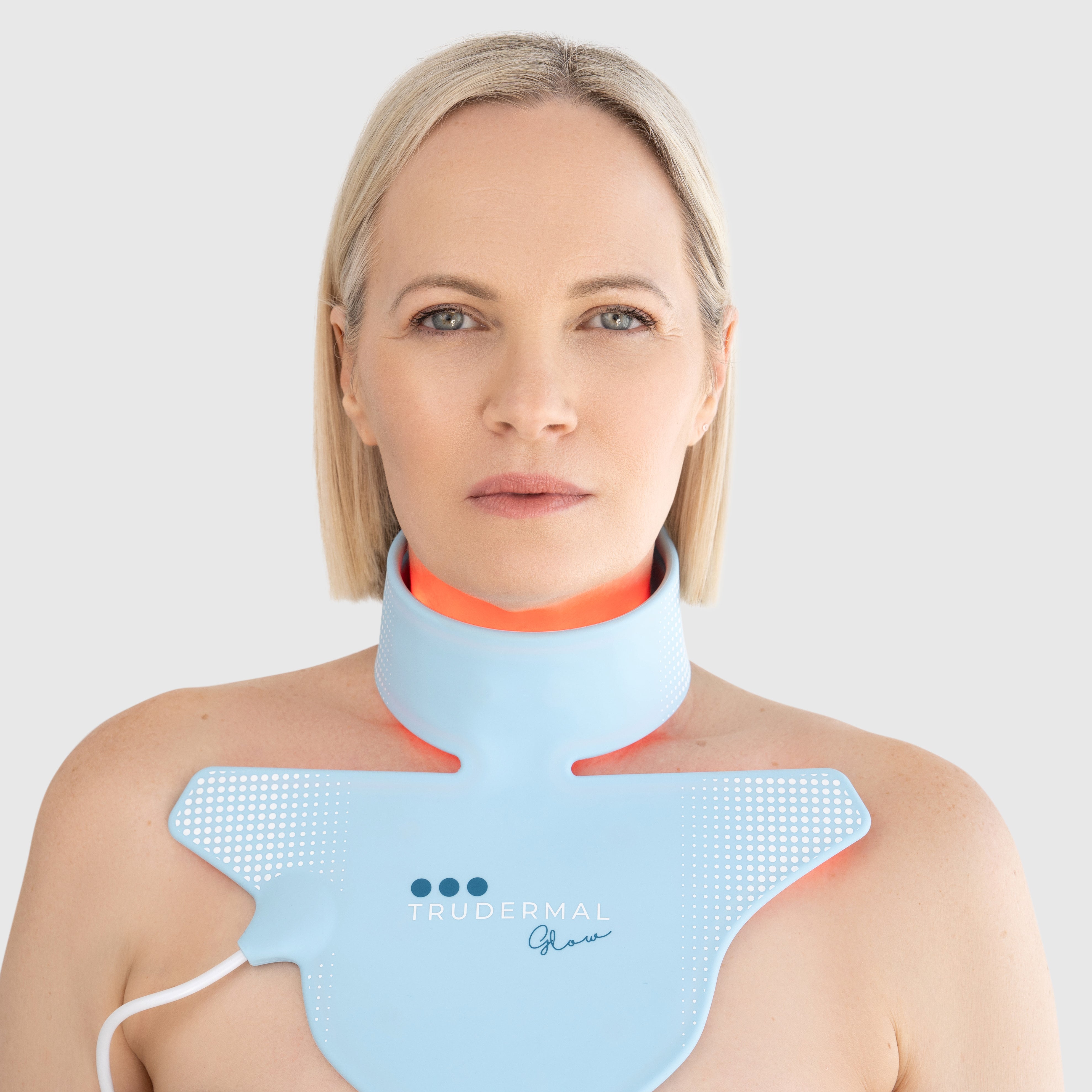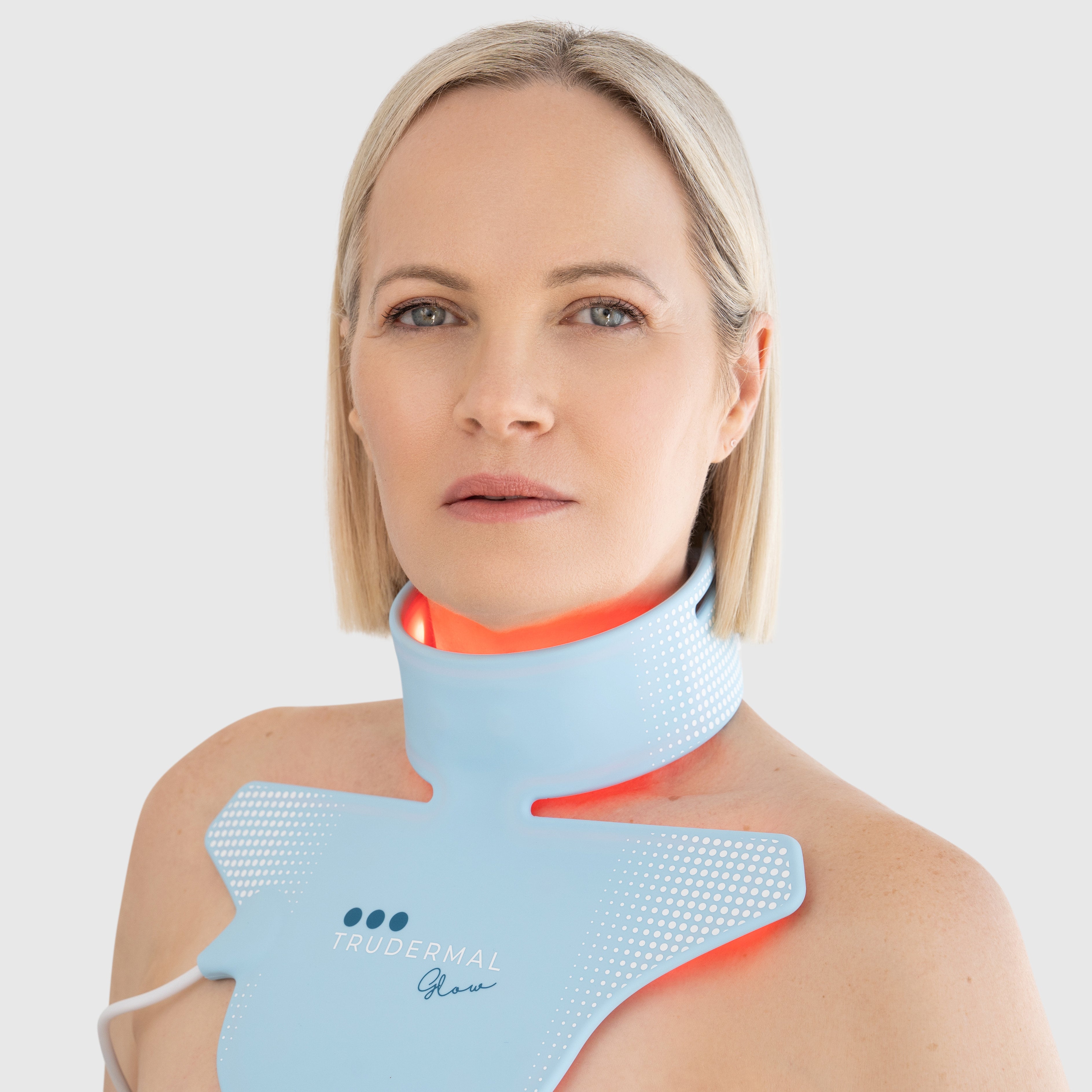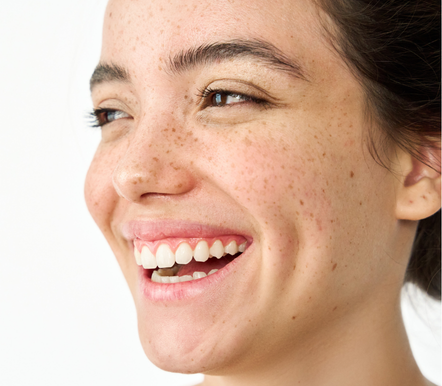


From Skin to Hair —Reach Your Goals
Our LED light therapy mask and devices are designed by skin experts, backed by science, and built for real results—safely and effectively. Whether you're targeting breakouts, boosting glow, or smoothing fine lines, our tech is trusted by pros and loved by beauty lovers everywhere.
Your go-to source for expert skincare tips, LED light therapy benefits and insights, and real stories from our glowing community. From how-to guides to wellness trends, we’re here to help you feel confident and stay informed.
Understanding your skin during menopause
Here’s what’s really happening to your skin throughout your transition, and what you can do to support your body every step of the way. While Menopause Awareness month may be coming to an end – the changes to our skin as we enter or navigate this phase of life we endure, which is why it remains the right time to talk about the impact of these hormonal shifts on the way we look and feel. At its core, menopause represents a fundamental change to the way our bodies function. When it comes to our skin, this can appear quite visible thanks to a decline in estrogen, which contributes to structural and functional skin changes. This includes everything from decreased collagen production to reduced elasticity, moisture loss, dryness and wrinkling. The collagen crisis During the early stages of menopause, our collagen stores experience a rapid decline, which can endure for many years to come. This collagen decline isn’t just about the gradual process of aging – it’s about hormonal shifts, which helps to explain why some of our skin changes can feel so sudden during this time in our lives. As collagen starts to decrease, you might notice a change in your skin’s firmness, its ability to repair itself, and how it actually feels. It may appear thinner, more fragile, and dryer than normal. The itch factor One of the most frustrating and underreported symptoms of menopausal skin changes however is the persistent itchiness, following an increase in dryness. The skin barrier (which is the protective layer of skin that keeps moisture in and irritants out) becomes compromised, which can then lead to the sensation of itchy skin – particularly on your body, arms, and legs. This itch can feel more persistent or deeper than what you may have experienced before. Getting enough shut eye Because those going through menopause often have sleep disturbances, this lack of quality sleep can also impact your skin’s ability to repair itself and regenerate. From hot flashes to night sweats, hormonal changes that affect the sleep-regulating centres in the brain and more, your skin may be visibly impacted by a rough night. The solutions you can embrace While skin treatments and topical applications can be helpful during this time, it’s also important to consider your diet and lifestyle to improve your skin’s health and resilience. Protein is at the top of this list – consider it your skin’s building blocks. Women can lose up to 40% of their muscle mass by the time they’ve gone through menopause. Protein however can support muscle strength, tone, and even skin. Your skin, hair, and nails are all made of protein, so adequate intake is super important during this time. To keep it simple and aim for quality protein alongside each meal during the day. What’s more, omega-3 fatty acids can support the skin barrier and help to combat any increase in dryness. Aim to include fatty fishlike salmon or mackerel into your regular diet. If you’re not a fan of fish, other options include adding walnuts, chia seeds, and flaxseeds to your daily intake. Importantly, fresh fruits and veggies can also provide much-needed antioxidants that help to repair cellular damage. The more colourful your plate, the better. Eating the rainbow will provide you with a range of antioxidants, which can benefit your skin and overall health. A note on collagen supplements Remember, your body breaks ingested collagen down into amino acids during digestion, but that doesn’t always mean these are reassembled as skin collagen. Instead of putting all your eggs in the supplement basket, consider consuming protein from whole food sources, which provides all the amino acids your body needs to build its own collagen, alongside other essential nutrients that supplements can’t replicate. A transition, not a decline Menopause is all about change but it’s not the end of the story. Understanding the science behind everything your body is going through may empower you to respond to each change with confidence rather than frustration. This next chapter can be just as good, if not better than the last, it’s all about perspective and arming yourself with the right information.
Learn moreSober Skin: The Beauty Benefits of Giving Up Alcohol
How giving up alcohol may positively impact your skin From dehydration to the breakdown of collagen, the relationship between your evening glass of wine and morning complexion can be a little more complex than you might think. The relationship between skin health and alcohol runs deeper than the post-party symptoms we often experience after a big night out. From cellular level aging to inflammatory skin conditions, what we now know about alcohol’s impact on our skin is reshaping our relationship with alcohol. Here’s why you might want to consider the role of alcohol in your skin routine, and how you can still enjoy your favourite drinks without worrying about the ongoing effects to your skin. Dehydration and the domino effect As many of us know, alcohol is a diuretic, which means it can lead to a loss of hydration, leaving the skin dry and more prone to fine lines. In consuming alcohol, water is pulled away from our cells, including those our skin cells. In the short term, this can lead to dryness and skin that appears a little dull or even flaky at times. What’s more, dehydration caused by alcohol can also lead to fluid retention, which gives the appearance of swelling and puffiness. Not the best combination. Frustratingly, this tends to create a cycle where your skin can become both dehydrated and puffy all at once. Collagen under attack If you’re already concerned with skin ageing, here’s where things get a bit more serious. Just like sun damage or smoking, alcohol consumption decreases collagen production – the all-important element which keeps our skin firm, plump, and resilient to external stressors. While collagen keeps our skin firm and youthful, alcohol depletes collagen production over time, and with this loss of elasticity, we experience sagging, fine lines, and deeper wrinkles. This is particularly troubling if you’re consuming alcohol regularly, as the cumulative effects of alcohol on collagen production increase. This can significantly impact your skin’s structure and appearance over time. Nutrient depletion But wait – there’s more. Alcohol can also create a less obvious but equally important issue – nutrient depletion. Alcohol diminishes essential nutrients in the body including Vitamin A, which is super important for skin repair and renewal. Not only does it assist with cell turnover, helping our skin to shed old and damaged cells while generating fresh and healthy ones – when alcohol interferes with this process, our skin can be left dull, congested and aged. Inflammation and skin conditions Perhaps some of the most compelling research relating to alcohol’s role in inflammatory skin conditions comes from a comprehensive study published in the Journal of the American Academy of Dermatology, which followed roughly 83,000 women over a period of 14 years. Increased alcohol intake was associated with a significantly elevated risk of incident rosacea compared with those who never drink, while a cross-sectional study involving nearly 4000 subjects found that alcohol consumption was also associated with acne severity – particularly mild acne. What’s more, those of us who also experience a flushed face after a cocktail or glass of wine, are actually experiencing inflammation in real-time. This histamine reaction creates redness and flushing that may be temporary but can become an ongoing issue, especially if you experience it often and continue to drink. Your skin’s resilienceDespite all the doom and gloom, there is some good news. Your skin is actually very resilient, and many people will see a change in their skin texture and hydration levels after limiting or reducing alcohol intake. While it may take weeks or even months for these effects to come to fruition, your skin, your gut, and your wallet will thank you eventually. Making and breaking the connection Having a better understanding of how alcohol can impact the skin doesn’t mean you have to completely abstain from your nightly or weekly wine. Rather it encourages us to make more informed choices. While alcohol is considered to be one of the major lifestyle choices that ages skin ahead of time, don’t forget that other causes include excessive UV exposure and genetics. The good news? Even moderate reductions in alcohol consumption can have positive effects on the skin. Whether it’s simply adding an alcohol-free weeknight to your routine or taking longer breaks between drinks, each decision can lead to change that supports healthier, happier, and more resilient skin.
Learn moreGlow From Within: The Best Skin Superfoods
While layering serums and creams might be our go-to skin support methods, the most profound changes to your complexion might actually lie in the heart of the home – the kitchen. We’ve heard the saying ‘you are what you eat’ but when it comes to skin health, this saying couldn’t ring truer. The foods we consume don’t just fuel our bodies – they have the potential to reshape our skin’s structure, elasticity, and appearance at a cellular level. From stimulating collagen production to calming inflammation and creating an antioxidant shield, the connection between nutrition and glowing grows strong with each new study. The beautiful truth? Every meal is an opportunity to support your skin from the inside out. The Collagen Connection Here’s where things get interesting. Collagen, that coveted protein responsible for our skin’s bounce and firmness, can actually be supported by what we eat. When you consume collagen-rich foods, your digestive system breaks them down into bioactive peptides that essentially send a memo to your skin cells to make more collagen. So, what can we eat to further support this process? Bone broth is the ultimate skin elixir, while grass-fed meat and wild-caught fish can deliver those crucial amino acids your skin craves. What’s more, oral collagen supplementation has the potential to improve skin hydration and elasticity. The best approach? Try to make collagen-supporting foods a regular part of your routine whenever possible. The Skin-Soothing Impact of Omega-3s If your skin could choose one nutrient to be besties with, it would probably be omega-3 fatty acids. These powerful compounds work like internal peacekeepers, calming the inflammation that can trigger everything from acne flare-ups to premature aging. Here’s what makes omega-3s so special – they don’t just address in one skin concern. They’re super versatile. Research has shown they can help with acne, support those dealing with psoriasis and eczema and even help skin heal faster. Think of it as having a multi-tasking skincare ingredient that works from the inside. Our modern diets are often heavy on processed foods, so the best fix is trying to introduce fatty fish like salmon and sardines, walnuts with morning yoghurt or chia seeds sprinkled over just about anything. Building Your Antioxidant Army Consider antioxidants your skin’s personal security team – they’re constantly working to neutralise the free radicals that can age your skin and damage skin cells. The more colourful your plate, the stronger your antioxidant defence becomes. Blueberries reign supreme here, packing more antioxidant power than almost any other fruit or veggie. The key is to introduce variety. Different antioxidants tackle different types of damage, so try to build a diverse portfolio of foods rather than relying solely on a single superfood. Dark chocolate (yes!) can be loaded with flavonoids to support skin health, but you need to invest in the good stuff that’s 70% cacao or higher. Green tea also provides catechins that protect against sun damage. Even your morning tomato on toast is working overtime, delivering lycopene that helps to maintain skin structure. In the meantime, you may also consider introducing or increasing dark leafy greens and capsicum for an additional antioxidant boost. Go Mediterranean – a lifestyle not a diet Instead of thinking about restrictive rules or complicated meal plans, consider the Mediterranean approach – a way of eating that that naturally delivers everything your skin needs to thrive. It’s rich in omega-3s from fish, antioxidants from olive oil and colourful veggies, and anti-inflammatory compounds from herbs and spices. What makes this approach so appealing isn’t just the individual nutrients, it’s how they all work together. Research suggests this synergy might be more powerful than any single supplement or superfood. Best of all – it’s a sustainable approach to eating and living well. Think more fish, plenty of olive oil, loads of veggies, whole grains and yes, even a glass of red wine with dinner every now and then. When patience pays off While any chance in diet takes commitment – it might also take some patience before you see results. Unlike topical applications, which can often reveal results in an instant, nutritional interventions need a bit of time – potentially up to three months. Yes, it may seem like a long time, but this timeline reflects the natural process of skin cell renewal and the time it takes for nutritional changes to manifest in your skin’s structure and appearance. Understanding and accepting this will help you set realistic expectations and reinforce the importance of consistency in your skin health routine – whether you’re focused on topical or diet-based solutions.
Learn moreHow Red LED Light therapy can Transform your Skin
We’re tackling your common skin concerns and diving into the many ways red light therapy can address the issues you’re struggling with most. Whether you’re looking to reduce the appearance of wrinkles and fine lines, treat an eczema flare, or win the battle of the dark spots with hyperpigmentation – red light therapy might just be the solution you’re looking for. In delivering specific wavelengths of light to your face, which stimulate a range of cellular processes deep within your skin, red light therapy can give your skin cells a gentle boost that increases collagen production and assists in the healing process. Wrinkles and fine linesResearch shows that red light therapy can smooth the skin and help reduce the appearance of wrinkles by stimulating collagen production. This is particularly helpful for aging skin as it helps to improve skin elasticity while acting as preventative measure against future wrinkles and lines. Importantly, red light therapy can often do all of this without creating any cellular damage that you might experience with more intense treatments. Eczema and inflammatory skin conditions If you’re already dealing with conditions such as eczema, psoriasis, or inflammation of your skin, red light therapy can provide a gentler treatment option for those needing a softer approach. With consistent use, you may experience subtle but noticeable improvements in psoriasis, rosacea and eczema with consistent use. This comes to life through the anti-inflammatory effects of the treatment, which can change your skin’s immune response at a cellular level. Hyperpigmentation – an ongoing challenge While red light therapy might be appropriate for a range of skin conditions, when it comes to hyperpigmentation – things get a little more nuanced. You may need to take a more considered approach here as research shows people with darker skin tones are more sensitive to red light. This can lead to increased hyperpigmentation in some instances. When used correctly however, red light therapy should be able to help with specific types of pigmentation concerns, particularly inflammatory-related pigmentation as opposed to sun damage or melasma. Acne – the other spots Is your skin prone to breakouts? Red light therapy might change that. The anti-inflammatory benefits of red-light therapy help to release cytokines from macrophages and other cells that reduce inflammation. What makes this type of treatment particularly useful for those suffering from acne-prone skin is how gentle it can be while still supporting your skin to heal. There’s no need for topical treatments that lead to dryness or irritation – instead red-light therapy does the heavy lifting without compromising the skin barrier. It can even improve the texture of your skin and reduce the appearance of acne scars thanks to its collagen-promoting qualities. On the right wavelength While it might seem logical to assume higher wavelengths or red light produce better results, it’s important to remember that not all red light devices are created equal. Research has shown that 660nm wavelengths produce different (and more long-lasting) results to 980 nm. For the optimal results, aim for 600-700 nm of red light, which provides consistent light with a high capacity to penetrate the skin. Best of all, this is a treatment can be used daily from the comfort of home. Think of it as a long-term approach to skin care, not just a quick fix. Finding your rhythm While red-light therapy can be used daily, it’s still important to figure out what feels right for you and your skin. If you’re prone to sensitivity, you may want to consider starting slowly with shorter or less-frequent sessions. If you often experience redness or irritation, keep an eye on how your skin responds to each session and adjust accordingly. For those dealing with aging skin concerns such as deeper lines or loss of elasticity, you may need longer treatment periods to see those initial results. Remember, red light therapy isn’t necessarily a one-size-fits all approach to skin concerns – your age, skin type and skin concerns all play a role in how well you’re respond to treatment, whether at home or in-clinic. By giving your red light therapy a chance to work its magic and finding your own sweet spot – you can better support your skin’s natural aging and healing process over time.
Learn more
Get clearer, younger-looking skin
with our LED light therapy mask.
Get clearer, younger-looking skin
with our LED light therapy mask.








